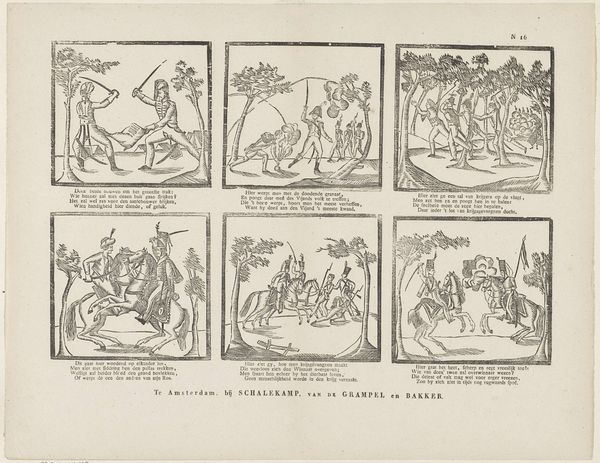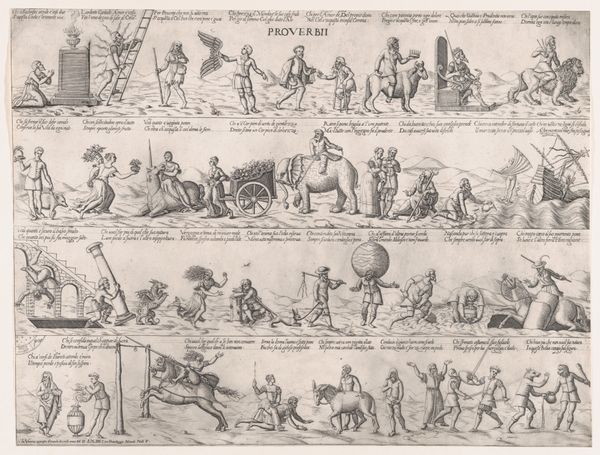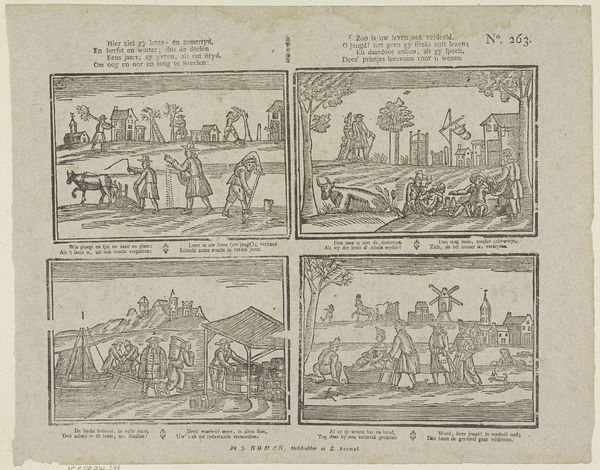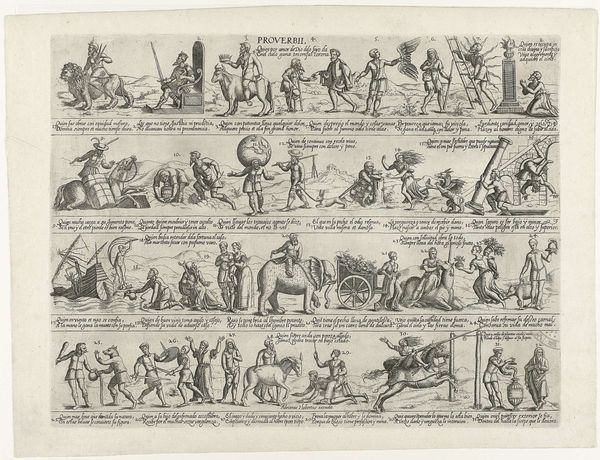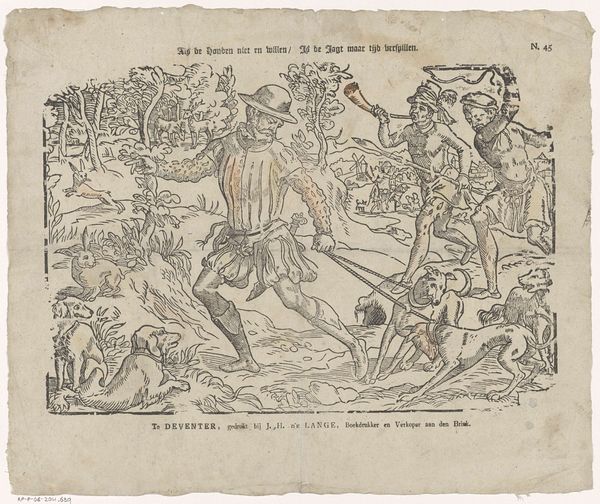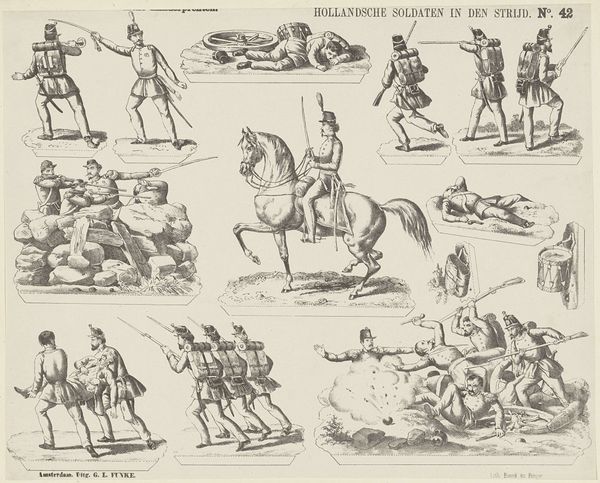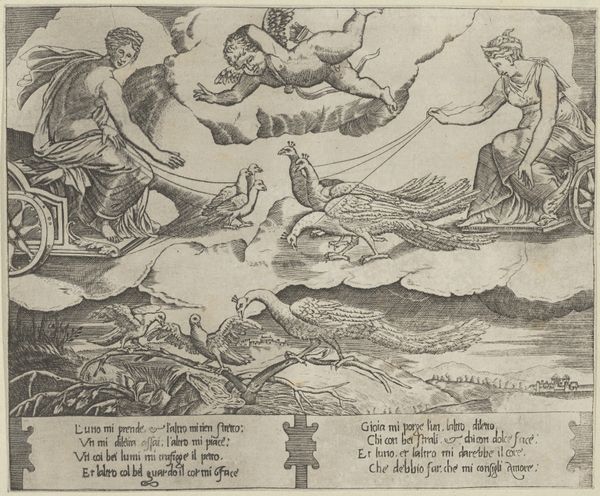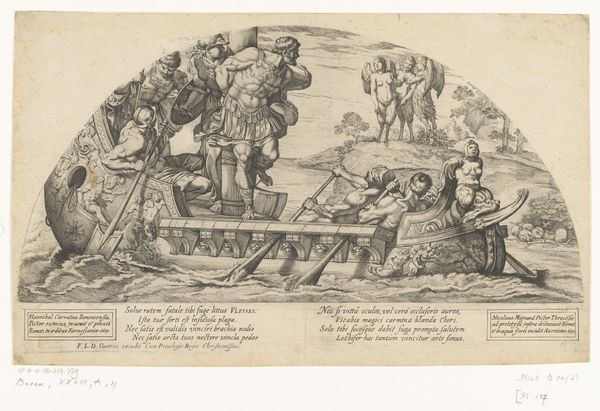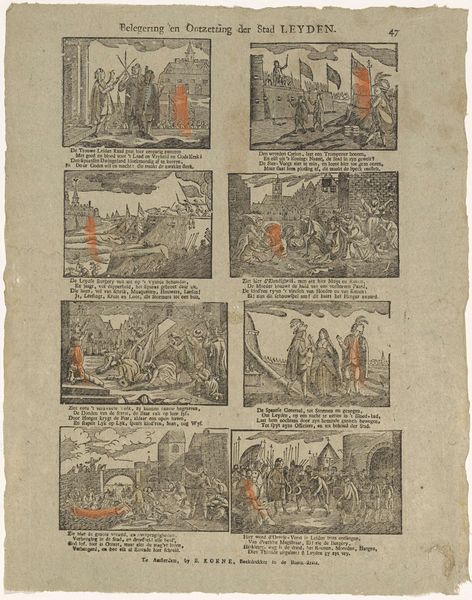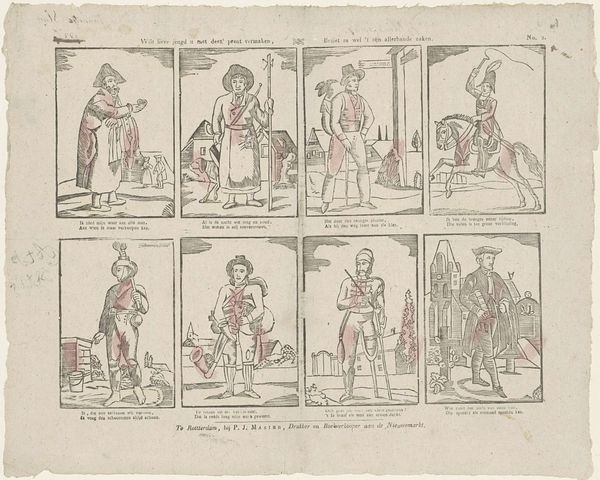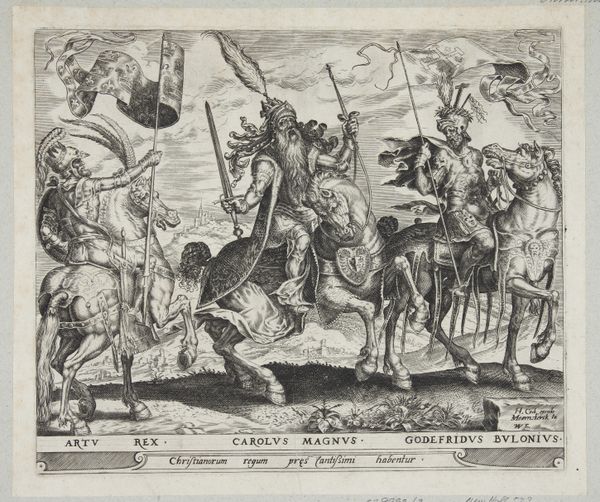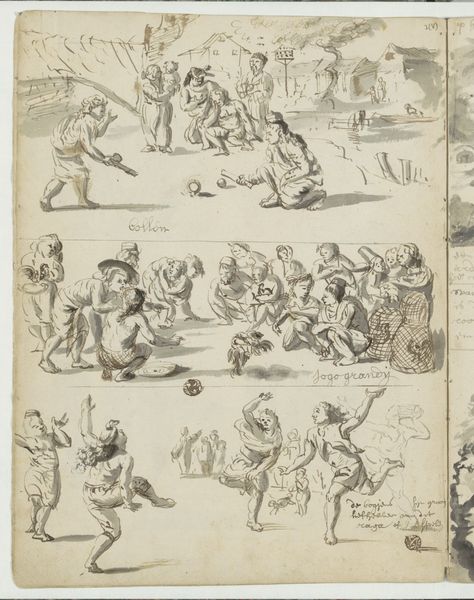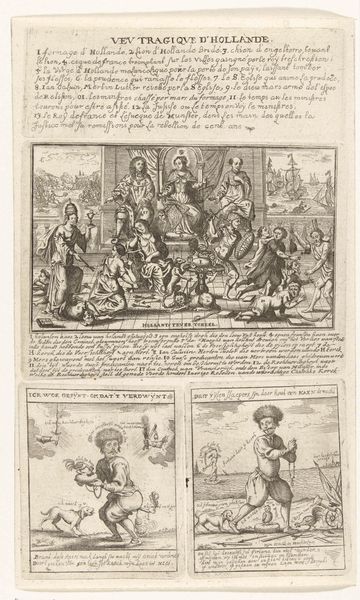
Ofschoon dit jagen kan vermaken, / O! lieve kindren leer van mij, / Dat jagen naar de nutte zaken, / Voor u het allerdienstigst zij 1806 - 1830
0:00
0:00
johannoman
Rijksmuseum
print, engraving
#
16_19th-century
#
narrative-art
#
dutch-golden-age
# print
#
landscape
#
figuration
#
line
#
genre-painting
#
engraving
Dimensions: height 314 mm, width 397 mm
Copyright: Rijks Museum: Open Domain
Curator: Editor, tell me about this print. Editor: This is "Ofschoon dit jagen kan vermaken..." by Johan Noman, dating from between 1806 and 1830. It's an engraving, a collection of hunting scenes and animal portraits. I’m struck by the almost… didactic quality? What kind of message was Noman trying to convey? Curator: Indeed. Considering its date, think about the rise of Enlightenment ideals. This wasn’t just about sport. It's not just hunting for sustenance, is it? Look at the text. Can we extract any message from there, what do you see there? Editor: Ah, it contrasts hunting for pleasure with hunting for… "nutte zaken," useful things. So it’s an argument for a more practical application of energy? A shift towards valuing labor and production over leisure? Curator: Precisely! And within the historical context, we could consider what impact print had on democratization of information and on distribution of ideals to a growing public. How does the imagery speak to that public, what meaning does it convey? Editor: It’s interesting how the artist combines scenes of hunting with almost scientific illustrations of animals. It implies both a control over nature, in the hunting scenes, and an understanding of it, with the animal portraits. Curator: Yes, it reflects a moment where natural philosophy, natural science, and public virtue were deeply intertwined. Consider, where was it printed? Who might have purchased this? Think of its reception, both historically and what meaning it can bear today. Editor: So much more than just a hunting scene. I appreciate learning more about the relationship to the changing views about nature. Curator: Indeed, the engraving gives us more of cultural shift within society and art, when viewing from an art historian point of view.
Comments
No comments
Be the first to comment and join the conversation on the ultimate creative platform.
